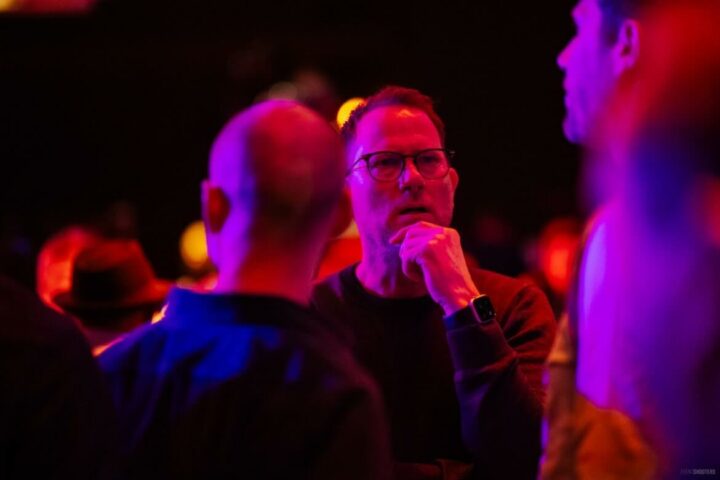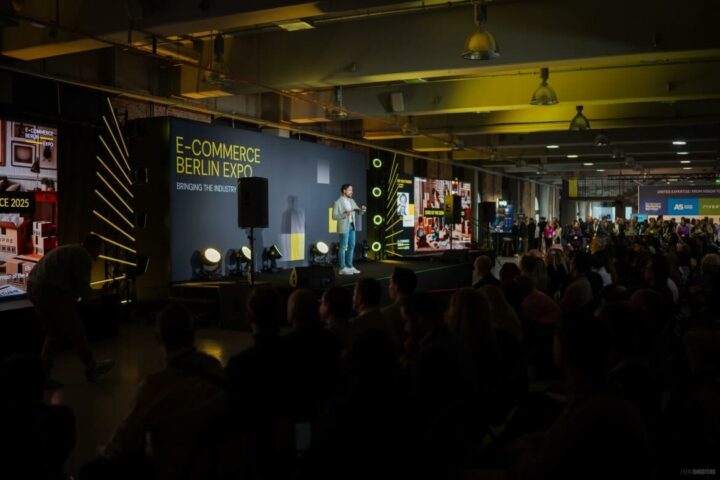EBE20 recap: Trends and sustainability in German E-Commerce [idealo]
Written by
Kinga EdwardsPublished on

Idealo as one of the leading e-commerce platforms in Germany can be recognized as an authority about DACH ecom trends. Katharina Huke performs the role of CCO, and she would like to share with her audience a couple of insights about this market.
What is Idealo?
For those who don’t know – Idealo is the fourth e-commerce and transactional platform in Germany. They’re direct competitors to platforms such as e-bay or amazon, and they are doing their best to outstand them in the future. With over 900 employers based in berlin, Idaloo is a strong player in the market. From the number of 50 million active German shoppers, they are able to attract almost 18 mln monthly, in which nearly 42% comes from direct traffic.
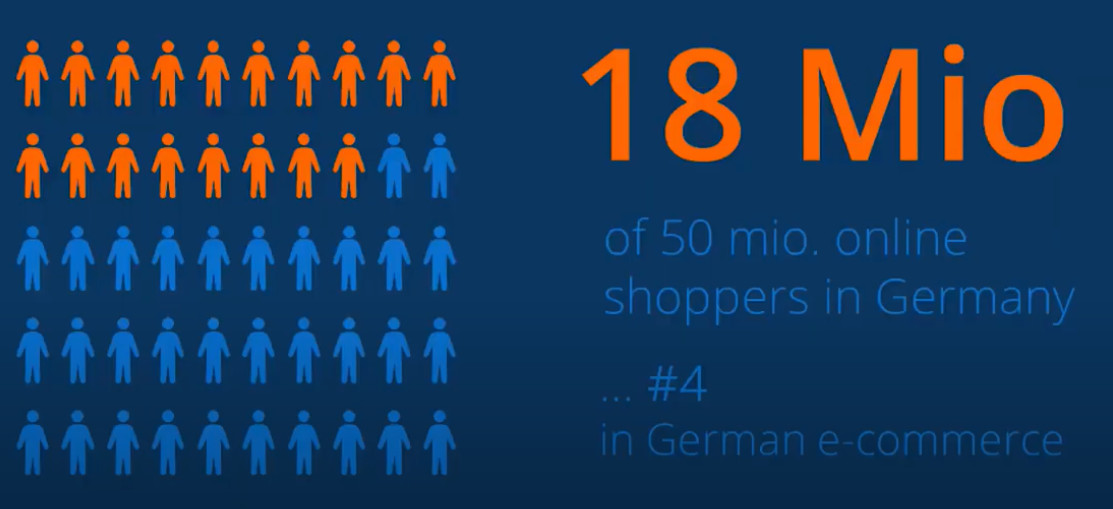
Online vs. offline market in Germany
It’s hard to speak about trends, especially if we take a look for the e-commerce industry. Nowadays we can new technologies are rising, and each one of them is quite promising! With technologies like artificial intelligence, automation, voice commerce, and augmented reality, we can be sure that they all have significant potential, and change how we perceive this industry. That’s why Kathrin wants to disclaim that she will only focus on technologies that she and Idalo are currently observing.

E-comerce market in Germany is still growing; even if we will assume that it becaming a mature market, we can always spot steady growth year by year. We cannot compare this growth to the numbers from 2004-2007 when it was increasing by 46-30% yearly, but nowadays we will experience 10% of its’ growth.
Online turnover is still less profitable than traditional one, but we can spot a tendency that e-com starts to “eating” from offline. In each year in becoming bigger, but right now is still only 10% of the overall retail rate.
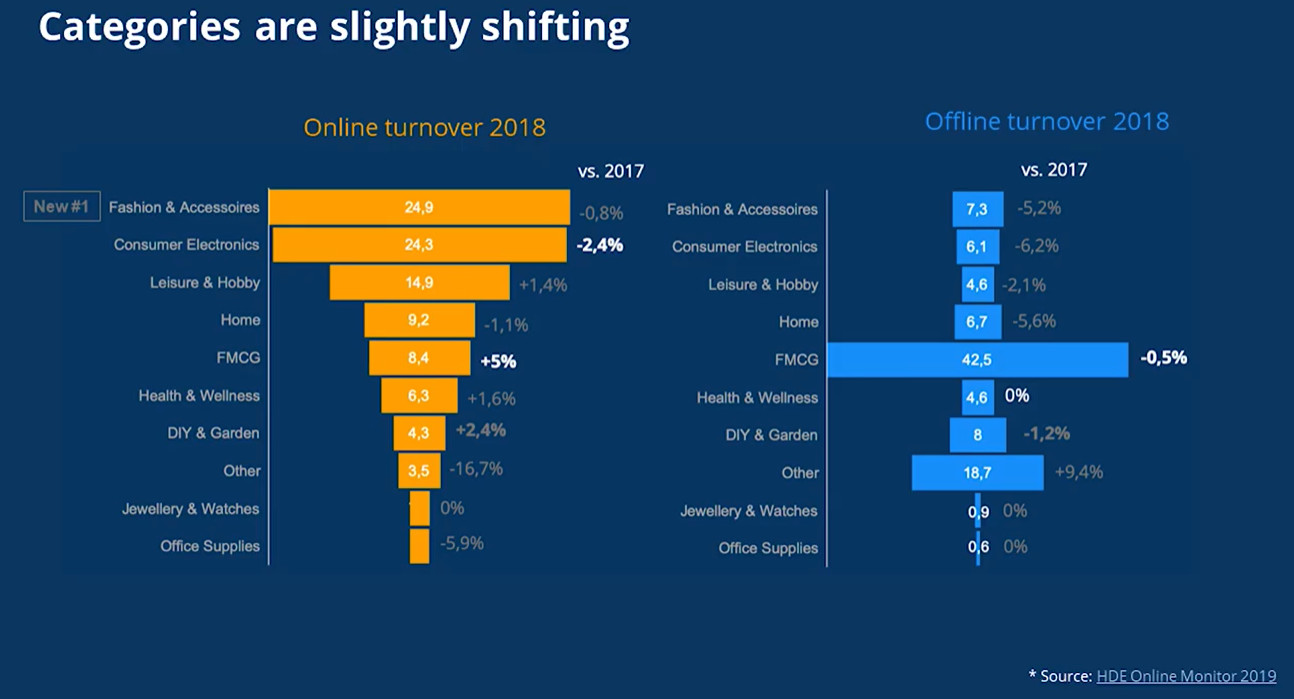
Diving into categories, we spot that the primary sources for online retail would be coming from fashion and consumer electronics goods while in traditional one, it mainly focused on fast moving consumer goods. But looking at the trends of online sales, we will spot a 5% growth as well. Katharina spots here an opportunity for further growth.
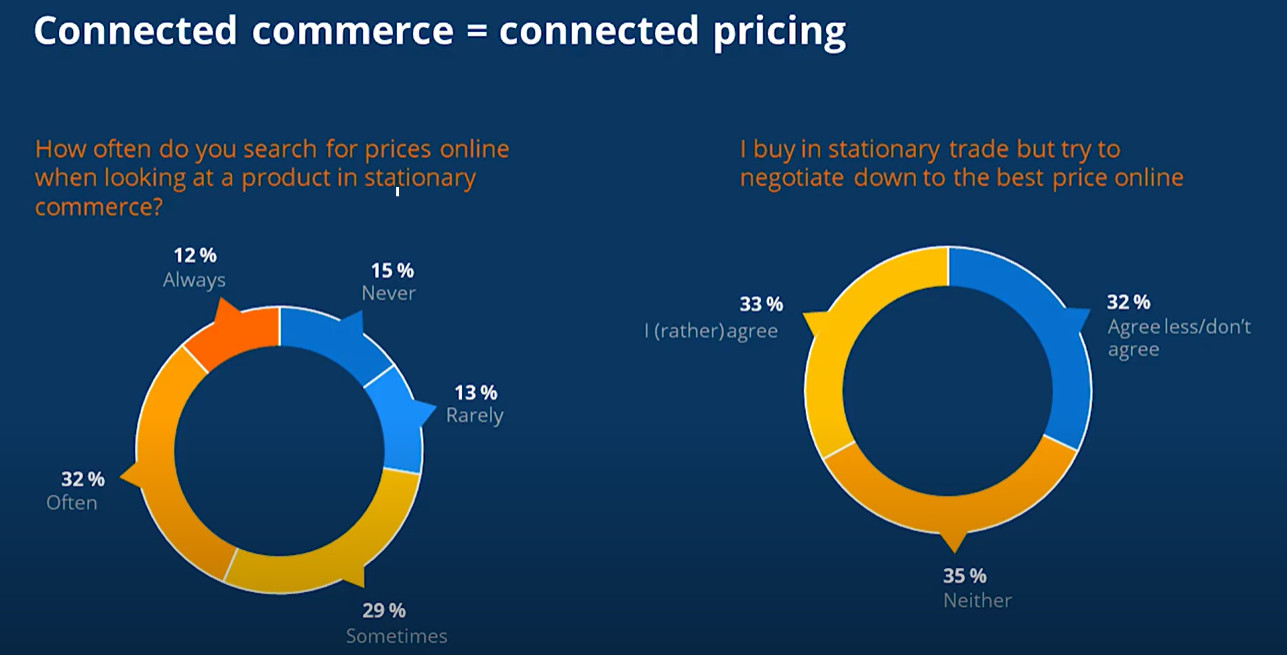
What’s Kathrine found as surprising was that the same percentage of customers who will seek the less expensive equivalent of products online would like to negotiate prices in real life. It’s widespread nowadays to check specific prices online while we are shopping in stationery shops, it’s also showing that e-com can only improve if people will still tend to do that.
Black Friday phenomena
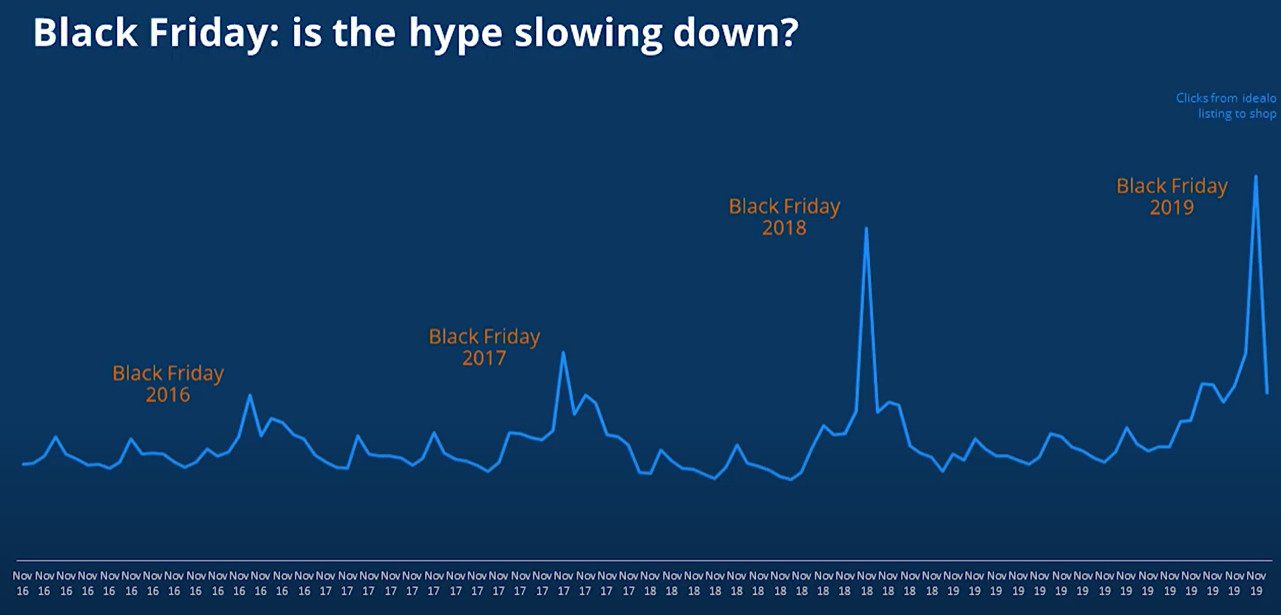
Black Friday is a trend that is less prevalent in Europe than it always been in the USA. Last year’s seemingly give us proof that this trend is increasing. Looking closely only for the Idealo customer session, we will see significant growth over the previous 4 years. Let’s have a look not only for a day of black Friday but for a whole black week. Noticeable is a more significant increase in e-commerce sales in those days. This means that idea of black Friday is still growing in Europe and it’s something which can attract our customers.
CCO of Ideolo claimed, we can all take advantage of that and start sale on Monday just before Black Friday, and keep it till Cyber Monday one week later- just like Amazon is doing it.
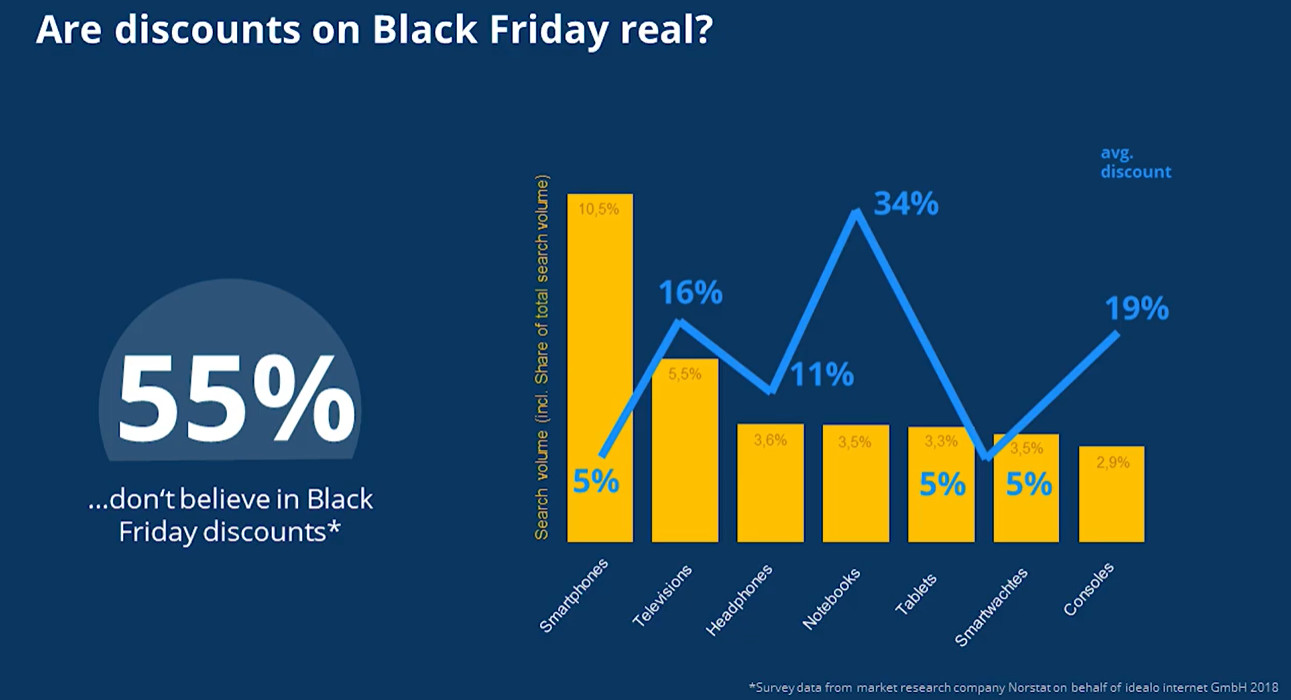
Almost everyone in past years has one mind-boggling question- if sales are legit? Nearly 55% of consumers are not beliving in the realness of these discounts, many claims that brands are increasing prices one week before just to put a small discount. Results of a survey created by Norstat in Germany showed us avg discounts on this particular day can reach even 34% off regular prices.
Still, the cuts are not even close to the ones well known from the USA. Looking at the most popular item in the last years – Airpods by apple, we will notice less than 10 euros of discount.
The ambivalent customer
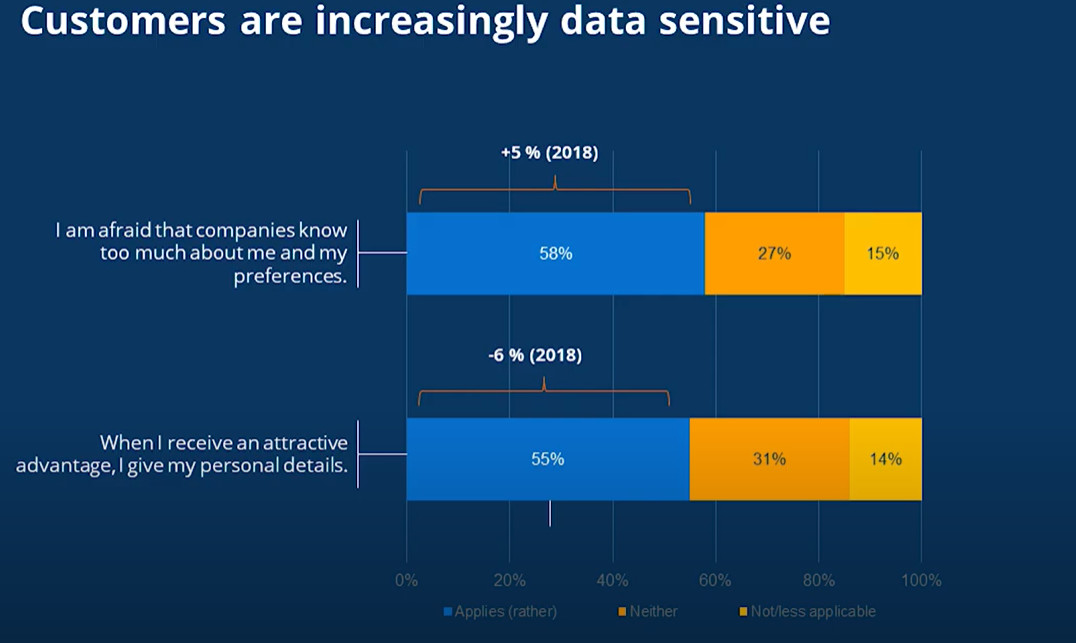
Over the past years, consumers became more and more data-sensitive; their lack of trust to give their data is still growing. Recent events, like the one with Facebook leaking data, convince us to care more about safeness on the internet, yet from the other side… Customers love to have individualized communication and offer to their use.
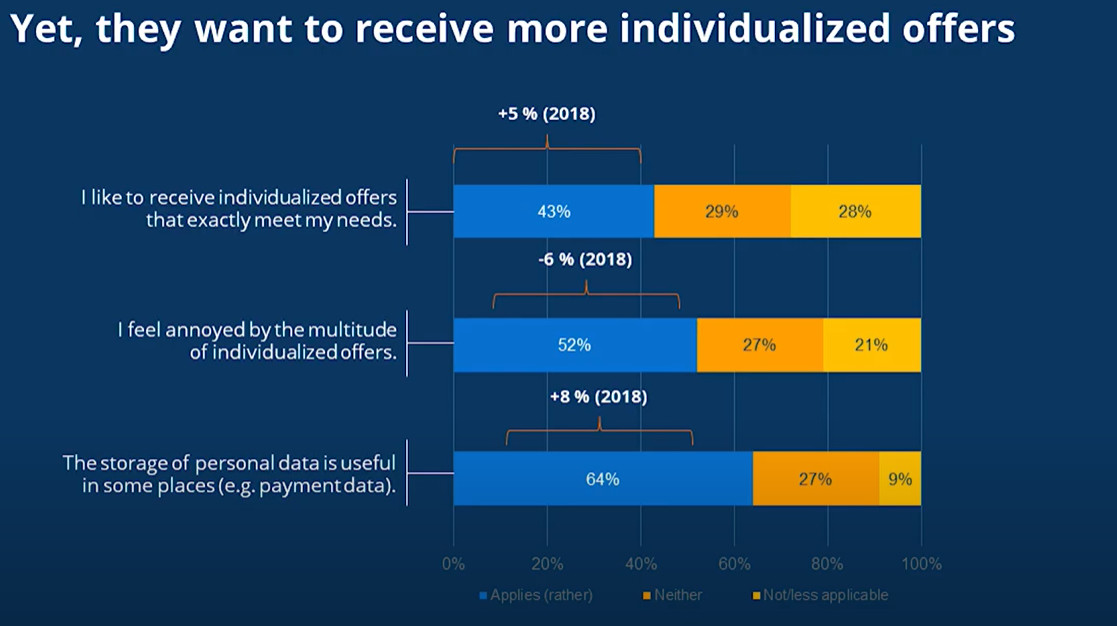
Regarding the fact that man people claim that they are data sensitive and they don’t like to share their personal information, we will notice that most of us also tend to want to have personalized offers. This tendency is increasing yearly, and it’s quickly becoming the most popular one.
There is also a considerable group that claiming that the storage of personal data is quite a handful in some places, and they don’t mind doing so. Apparently, customers do not see these factors connected, which might look quite surprising.
Technologies with growing interest
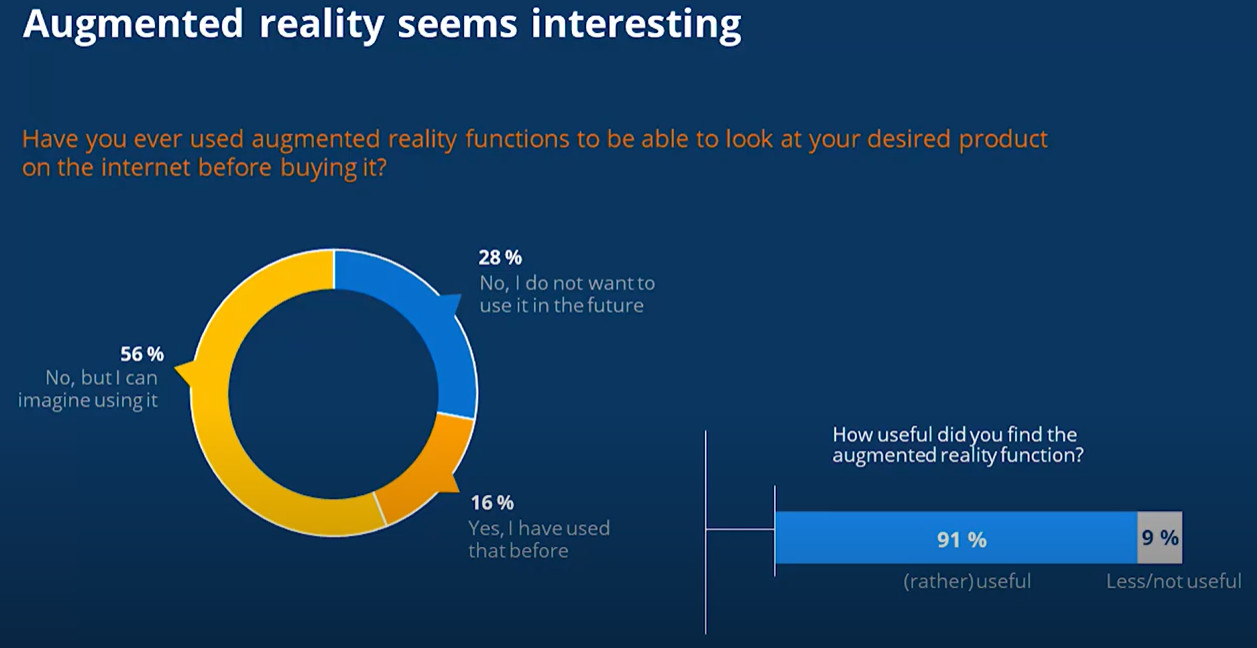
New technologies are rising daily, some of them can look promising for a customer and create a sort of trend, and some of them will vanish in the next decade. As one which is worth to observe Kathrina sees Augmented Reality and using it e-shops. Almost 91% of customers see it as something exciting, while 56% can imagine that they are using it to look at the desired product.
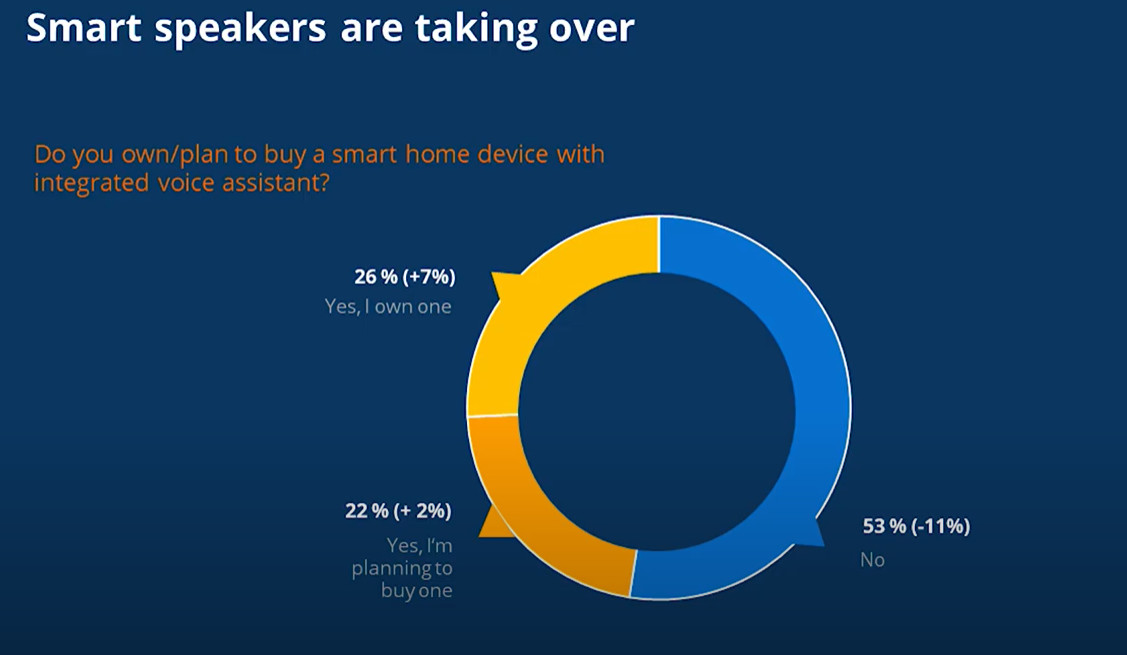
Smart speakers are a thing now. Roughly 50% of customers are planning to buy, or they already have one. Devices like Alexa are not just fancy speakers, but they can be quite a helpful tool for shopping purposes. So far, customers do not see their potential there yet. Consumers would use them rather to get information, listen to music, or to write messages.
What customers think about delivery?
Delivery time is now even more valuable, then it was ever before. The number of people who would like to have a package on the same day or in a time window of their choice is still increasing. Customers are more willing to pay more for that kind of service; they are more likely to choose shops with shorter delivery.
Customers are big in selecting a delivery option into specific pickup points. If we take a look at how many German buyers are willing to pay more for eco-friendly delivery, we can observe then almost 72% will agree to spend additionally up to 3 Euro to back this cause. The same trend we will notice if we speak about reusable packaging- almost 91% of customers are into choosing one.
.
Sustainability
All of those trends above will lead to the final claim that E-com and sustainability can come along together. Using and choosing an E-commerce instead of stationery shops may lead to generate less carbon dioxide, as e-shops have a small carbon footprint.
Awareness of sustainability is still rising; people have broader knowledge about how meaningful impact our civilization has on the environment. Consumers’ awareness increased by almost 21% in past years.
Yet, if we look closer at purchasing decision criteria, 93% of consumers would look at quality, and 86% of them will focus on price. Barely 48% of German consumers think that sustainability is a thing. That’s why Idealo focuses on delivering a choice to consumers who care; that’s why they add up categories to consider more competent decisions. That’s why, as an Idealo consumer, you can choose a certificate, energy-saving, resources, or used product filters. It allows customers to select products that share eco-friendly values.
Learnings…
This incredibly insightful keynote session taught us that FMCG is continuously growing, not only in traditional retail. Fast-moving consumer goods will be more popular online with time. ,, Connected Commerce” are becoming more relevant for consumers in the name of price comparison; this will likely improve a number of e-shops users.
Black Friday’s popularity is becoming more significant in Europe;, speaking about it, we can forecast increased movement in business in the whole week. It means that we can use it to attract customers even a couple of days before and after BF.
Looking at consumers’ behavior, we will notice some looseness. At some point, we have a data-sensitive population, which is focusing on their safeness online. At the same time, a large number of customers would like to get more personalized offers into their hands.
Online shopping is less impactful for the environment then traditional retail; it can decrease a carbon dioxide footprint. It’s essential, especially when for half on consumers, it’s meaningful. Most of them are even willing to pay more for this cause!

